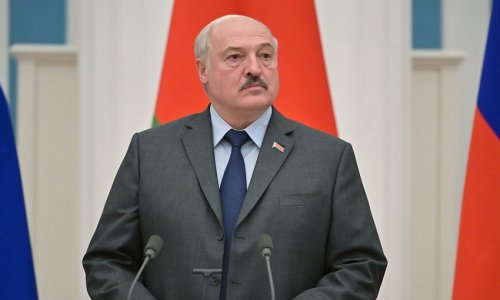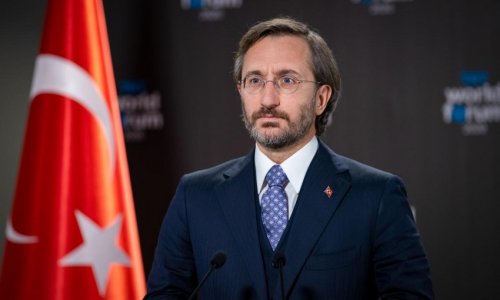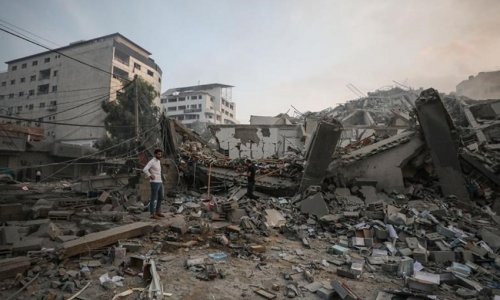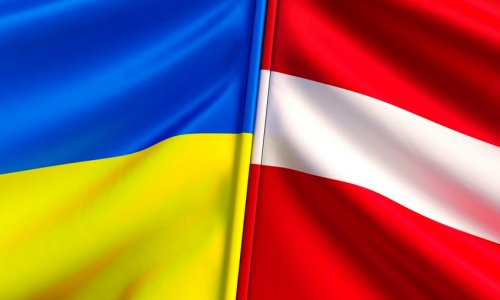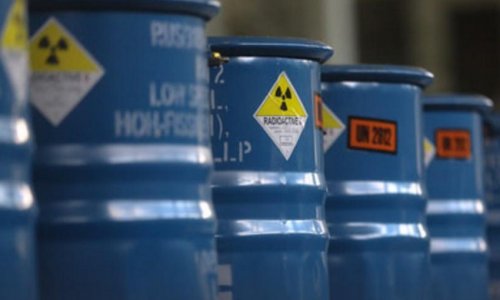The mother of martyrs, a woman in her fifties, is delicately beautiful and visibly in pain. She covers her hazel eyes and sobs over a photo album as the call to prayer echoes throughout the Georgian village of Jokolo, just south of the Chechen border.The mother’s story involves one of the most notorious jihadists in the world, a man who served in intelligence units trained by Americans and the British, a man who is the face of the ISIS conquests, and a man who took her late son’s wife for his own bride.The mother, Leila Achishvili, tries hard to maintain her poise, even as she discusses the death of both of her boys, Hamzat and Khalid Borchashvili. She is halfway through a box of tissues. Her story has just begun.The eight-mile-long Pankisi Valley is notorious even in the infamous Caucasus as a lawless corridor for smuggling weapons, drugs, and jihadists into Chechnya, just a few miles to the north and the east. It is also one of the few places in Georgia where the sorrowful beauty of the call to prayer still can be heard. These days Pankisi feels closer to Syria than to the nation of Georgia, to which it belongs.Among the younger generations, radical versions of Sunni Wahhabism have replaced the traditional moderate Sufi Islam of Pankisi’s Kist majority. There is rampant unemployment, and many of these disillusioned young Georgian jihadists now make their way west to Syria via neighboring Turkey. They are inspired by local legend and ISIS commander Abu Omar al-Shishani, who made the same journey only a few years before.Stories and rumors circulate—whispers of his massive villa, his fiefdom and private harem, his 40 personal guards, his armored cavalcade of SUVs, and now his stunning and fierce Chechen warrior wife. For these young men, their Pankisi native son has already become part Josef Stalin (another native son of Georgia) and part rock star of the media-savvy Islamic caliphate. But according to his father, Abu Omar al-Shishani is a mirage: It’s his older brother who is running the ISIS show.The name that Abu Omar al-Shishani grew up with was Tarkhan. And because we are here in his hometown talking to the people who once loved him, and perhaps still do, we’ll use that name, too. Tarkhan’s father, Temur, a grizzled, eccentric, well-read old Christian with a bitter sense of self-irony, tells his sons’ story in an extensive—almost bizarre—interview with The Daily Beast at his small gray house in the village of Birkiani, where his boys grew up.“I am like a hobo,” the old man declares. “My son is one of the founders of Islamic caliphate and I’m here, dying in poverty! Look! Look where I live!” According to Temur, his son even invited him to Syria. “He told me, ‘Dad, come with me. You’ll live like you are in paradise.’ I told him, ‘Save your paradise for yourself, I prefer my home here.’”Despite Tarkhan’s fame as a holy warrior, the father doesn’t see him as particularly pious, his mother came from a Muslim family, but he didn’t show much interest. The old man claims that, in fact, before Tarkhan went to prison, he wasn’t religious at all. He supposedly warned his older brothers about the dangers of fanatical Islam, especially his brother Tamaz, who was fighting in Chechnya: “‘Be citizens of Georgia,’ Tarkhan would say to Tamaz, ‘You are in a war, you may fight there, but do not pick up their beliefs.’ And now look what happened! Do you see how a man can change?”Like so many of the world’s most brutal dictators, military leaders, tyrants, and jihadists, it appears Tarkhan was trained by the very best: the United States government. According to his father and former colleagues, Tarkhan worked for an elite “Spetsnaz” Georgian military-intelligence unit—at least until he caught tuberculosis, lost his job in the intelligence unit, was then framed by that same intelligence unit, and went to jail in 2010 for weapons possession.Tarkhan’s father claims that his son worked, specifically, for the ministry of interior’s KUD or “Kudi,” basically the domestic-intelligence and special-operations service in Georgia, officially called the Constitutional Security Department. The agency was notoriously brutal. When asked if it was true that his son Tarkhan was trained by the United States, Temur says, “Of course they did. They trained all of the Georgian army back then… My boy was just 19 when he went to the army… This KUDI, where he was working, it was an intelligence and reconnaissance unit.”The United States government has been overtly training and funding Georgian troops for more than a decade. This is no secret. Last month, when U.S. Defense Secretary Chuck Hagel visited Georgia, he also visited U.S. Marines at the Krtsanisi National Training Center outside Tbilisi, where the leathernecks continue to train Georgian troops as they have for more than a dozen years.The Daily Beast has learned that a young clean-shaven Tarkhan joined the U.S-funded Georgian army in 2006. He rose quickly. He was recruited into a newly created “Spetsnaz” intelligence unit and he carried out reconnaissance on Russian tank brigades during the 2008 Georgia/Russia War. Levan Amiridze, Tarkhan’s friend and military colleague, with whom he would later spend time in prison, confirmed that officers in the “secret services” of the ministry of defense were routinely trained by both U.S. and British instructors. So there is little doubt that the ISIS commander from Pankisi was either trained by the Americans or by the officers whom they had trained.Yet despite Tarkhan’s American guidance and combat experience, Tarkhan’s father doesn’t see his son as any kind of military mastermind. Temur views his youngest boy as a kind of victim. Over the course of the interview, the father sketches a relationship that his two sons have gone to great lengths to create and to conceal in their command of ISIS troops in Syria.“Tarkhan is 27, not more—a child! Tamaz is his teacher. Tamaz ruined everything I had,” says the father of these holy warriors. “Tamaz is everything, the main actor; Tarkhan is nothing.” It was Tamaz who went off to fight in Grozny during the gruesome Chechen rebellion against Russia in the 1990s and early in the last decade. It was Tamaz who took his whole family to Syria. “They are together. Tamaz is his mentor. He survived that huge Grozny war and came back alive. [But] in Syria, Tamaz doesn’t show himself.”And there we have it. The conspicuous, red-bearded jihadist Tarkhan, a.k.a. Abu Omar, one of the most wanted terrorists on the planet, may well be a figurehead for his older brother, the mastermind behind the Chechen operatives running ISIS offensives in Syria and Iraq.If this is true, it explains why, unlike the rest of the top ISIS commanders, Tarkhan allows himself to be photographed extensively. They are creating the illusion that he is the “head of snake”—while the real architect of ISIS’s Syria operation, Tamaz Batirashvili, remains in the shadows.The two brothers have similar features, the same nose, same red beards, yet we are told that Tamaz doesn’t typically wear military fatigues. He dresses simply, in a gown with a scarf on his head. They play two very different roles, but according to a local in Pankisi, “It’s instantly recognizable that they are brothers.” The tactic is quite clever in the terrifying game of illusion and terror that is so essential to the mystique and the conquests of the self-declared caliphate.The importance of Tamaz is not just a figment of the old man’s imagination. The elder brother’s military prowess and importance to Georgian intelligence was also confirmed by a former Georgian military official, who spoke on condition that he not be identified by name.There were much more professional and experienced men in the group from the Pankisi who worked with the Georgian spy agency. “Tarkhan was the only newbie,” says this source. “We only recruited him because we were interested in his brother—Tamaz and his friends, who were ‘real wolves,’ experienced soldiers, and veterans of the Chechen wars. We had certain interests toward them.” Georgia’s Anti-Terrorism Center, or ATC, allegedly ran some jihadists out of Pankisi to fight against Moscow’s troops in Grozny, a charge the Georgian government has always denied.But when Tarkhan got sick with tuberculosis and was ushered out, the government gave him no pension or medical assistance. He grew increasingly angry, and then the government went after him, charging him with arms possession—just as it had done with his older brother years before—and throwing him in jail.“I don’t know whether he really was involved in weapon smuggling, but most of his friends, including those who were arrested with him, presumably really were doing this,” said the same former official. “Some even were drug addicts. And Tarkhan was thought to act as a fixer, getting them in touch with people from Pankisi who wanted to buy weapons.”The home of Leila, the soft-spoken mother of martyrs, is warm and elegant, a far cry from the tiny cottage of the boisterous Temur, Tarkhan’s father. Yet Leila’s hearth is also the childhood home of two Wahhabi jihadists who left Pankisi to join Tarkhan’s fight in Syria. Leila’s sons, Hamzat and Khalid Borchashvili, also have not returned. And there is this curious connection as well: Leila and Temur have the same daughter-in-law.Her name is Seda Dudurkaeva, although now she goes by the name Aisha. With big brown eyes, long lashes, and voluptuous features, she was once one of Chechnya’s most desired brides. Seda is the daughter of Asu Dudurkaev, who was a minister in the government of Chechen President Ramzan Kadyrov—who fired him because he could not “control” his fanatical daughter.Kadyrov, who is very close to Russian President Vladimir Putin, and a strong supporter of the Assad regime in Syria, announced the dismissal of the minister on his absurdly active Instagram page in late November last year: “Dudurkaev, as the leader of one of the most important structures, has no moral right to speak with subordinates about morality and patriotism and religion. His own daughter is in the ranks of the Wahhabis and bandits, who are shedding the blood of civilians, and blowing up Islamic shrines in Syria.”Seda, the Chechen beauty, first went to Syria to marry Leila’s son Hamzat, and Leila’s sobs grow deeper as her story progresses. She says that when her two sons were just boys she sent them to live with her former husband in Austria. She thought he could provide better for them, and she wanted to get them away from the increasingly radical atmosphere in Pankisi. She remembers Hamzat coming home one day when he was only 12 years old wearing the kind of robes affected by the Wahhabi extremist. “I thought in Europe they would abandon Wahhabi teachings,” she say. “I was wrong.”Fifteen years later, when Hamzat returned from Austria to Pankisi, he was well-educated, with an engineer’s diploma from a university in Vienna, and he could speak five languages. But he took all these skills to Syria, to fight alongside Tarkhan, now known as Abu Omar al-Shishani.“Hamzat became his interpreter and he would travel everywhere with Abu Omar, never leaving his side and respecting him enormously,” Leila says. But she heard from him only rarely. “I begged him to call me via Skype,” she said. “It’s shameful for a mujahedin to disobey his mother’s wish.”“I used to not sleep at night, waiting for Hamzat’s Skype call. One night he finally did. Suddenly there on the screen was my son wearing a black scarf on his head with ‘Allah u Akbar’ written in Arabic. When I saw him, I cannot express the feeling I had,” she said. “I asked him: ‘For God’s sake… For Allah’s sake, take me there with you to Syria, I just want to hug you, nothing more.’”Hamzat agreed to let her visit. “I asked him what to bring with me,” she said. “He told me to bring natural Georgian honey and churchkhela [a traditional Georgian candy made with dried grape must and nuts] for Abu Omar al-Shishani, which he loves very much. I knew Abu Omar,” said Leila. “He grew up here in Pankisi and for some time he worked in Georgia. I took everything that my son liked and missed. And I went to Turkey by bus.”Leila is reluctant to talk about her son’s wife—the girl who fled from her wealthy father, a life of luxury, and traveled to Syria to marry a mujahedin. She says Seda and Hamzat met online, and that the girl left her guarded house to visit Hamzat, who had been wounded and was in hospital being treated. She acknowledges that someone helped Seda get to Hamzat in Syria, although Leila declines to say if it was friend or a relative.President Kadyrov, who famously persecutes Wahhabis in Chechnya (along with many others), declared it “a matter of honor” and “a priority” that Seda, who now calls herself Aisha, return to the land of her birth. And the Chechen government’s search for the ex-minister’s daughter eventually led to Leila. “They contacted me and told me to bring that girl back—saying ‘She doesn’t belong with the likes of you,’” Leila recalls.(thedailybeast.com)Bakudaily.Az
The Secret Life of an ISIS Warlord
World
15:00 | 28.10.2014

The Secret Life of an ISIS Warlord
Abu Omar al-Shishani has a fierce, gorgeous Chechen bride. He learned intelligence operations from the U.S. And his older brother may be the real genius of ISIS.
Follow us !

